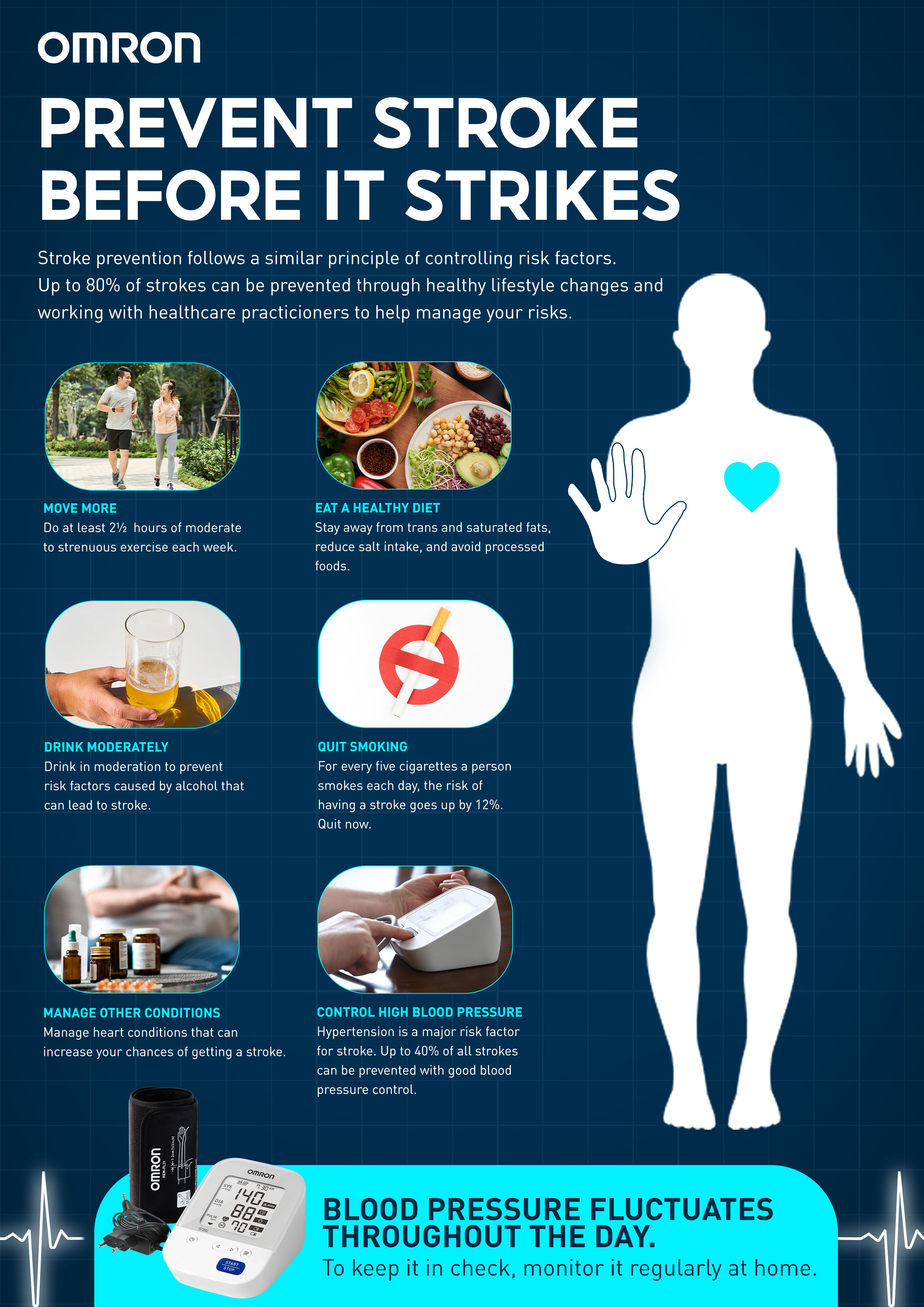This article has been medically reviewed by Dr. Gilbert C. Vilela, PSB of Cardiology | President, Philippine Heart Association 2022 | Department of Education, Philippine Heart Center.
Stroke prevention follows a similar principle of controlling risk factors. Up to 80% of strokes can be prevented through healthy lifestyle changes and working with healthcare practitioners to help manage your risks.
Here are ways to lower your risk of a stroke:
Move More
Being sedentary can lead to obesity, high cholesterol, diabetes, and high blood pressure. Which are risk factors for stroke. Try to engage in at least 2½ hours of moderate to strenuous exercise each week. Another way to do this is to be active for 30 minutes a day, at least 5 days a week. Get moving to lower your chances of suffering from stroke.
Eat A Healthy Diet
Healthy eating can lower your risk of a stroke and help you shed weight if you need to. Stay away from trans and saturated fats, which can clog your arteries. Reduce salt intake; people who consume less than 5 grams of salt daily had lower blood pressure and a lower risk of stroke, coronary heart attack, and other cardiovascular diseases. Avoid processed foods, They’re often loaded with salt, which can raise your blood pressure, and trans fats.
Drink Moderately
Alcohol can cause high blood pressure and atrial fibrillation. It can also contribute to unhealthy weight and uncontrolled diabetes. All these things increase your risk of stroke.
Quit Smoking
Studies show that for every five cigarettes a person smokes each day, the risk of having a stroke goes up by 12%. Quitting will lower your risk for stroke.
Manage Other Conditions
If you have been diagnosed with heart conditions such as coronary artery disease or atrial fibrillation (irregular heartbeat), make sure that your condition is well-managed. This is also important for helping prevent strokes.
Control High Blood Pressure
Hypertension is a major risk factor for both ischemic and hemorrhagic stroke. It’s an identified risk factor in up to 90% of all strokes, and it is estimated that up to 40% of all strokes can be prevented with good blood pressure control.
Understand and Keep Your Blood Pressure In Check
To keep your blood pressure in check, monitor it regularly at home. It’s helpful to understand what the numbers mean. There are 2 parts to a blood pressure reading. The first or higher number is known as the systolic blood pressure. It indicates the pressure when the heart is beating. The second or lower number is the diastolic blood pressure, which tells you the pressure when your heart is between beats or at rest. This pressure is measured in millimeters of mercury (mm Hg).
Normal blood pressure for an adult is 120/80 mm Hg. If your systolic blood pressure is between 120 and 139 mm Hg and your diastolic blood pressure is between 80 and 89 mm HG, then you are at moderate stroke risk. If your systolic blood pressure is 140 mm Hg or higher and your diastolic blood pressure is 90 mm HG or higher, then you are at high risk for a stroke.
Blood pressure fluctuates throughout the day. For some, it gets higher when blood pressure is measured in a clinic – this condition is known as white coat hypertension.
Therefore it is worthwhile to get an average picture of your blood pressure by measuring your blood pressure at home.
Check out a device that also detects atrial fibrillation. Atrial Fibrillation is the most common cardiac arrhythmia (irregular heartbeat) and a major risk factor of stroke. Regular screening at home can reduce the risk of getting a stroke or heart attack.


|
Previous article How Stroke Disrupts Your Daily Life & How To Prevent It - India |
Next article How You Can Prevent Stroke Now Before It Strikes - Malaysia |